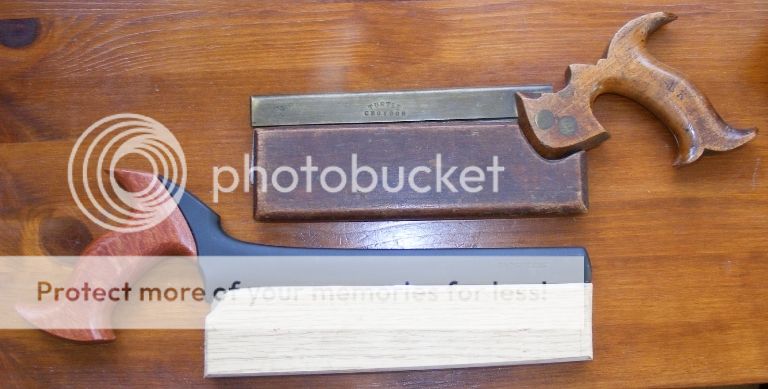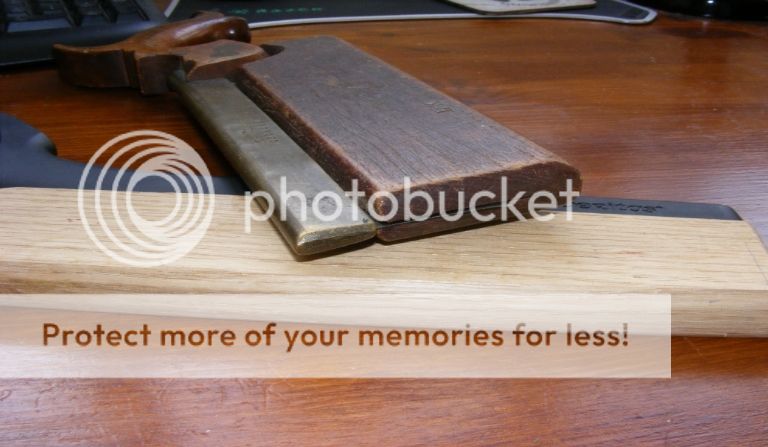DuncanA
Established Member
In an attempt to protect my dovetail saw's blade I've just finished building a wooden blade guard, copying the design from another saw that was passed down to me (pictured with the new one below). However, no sooner had I finished the wooden guard, and was admiring it in the dim light of the workshop, a worry struck me - I'd built it in Oak.
Now I know not to use steel screws in Oak because discolouration can occur, but I'm not sure about what the reaction going on actually is. Are the tannins in the Oak damaging the steel, or is the steel just causing discolouration to the wood; will an Oak sleeve for a saw damage the saw plate at all?


Have I passed my morning making a usable blade guard, or some firewood (firewood that was good practice mind you!)?
Now I know not to use steel screws in Oak because discolouration can occur, but I'm not sure about what the reaction going on actually is. Are the tannins in the Oak damaging the steel, or is the steel just causing discolouration to the wood; will an Oak sleeve for a saw damage the saw plate at all?


Have I passed my morning making a usable blade guard, or some firewood (firewood that was good practice mind you!)?
































